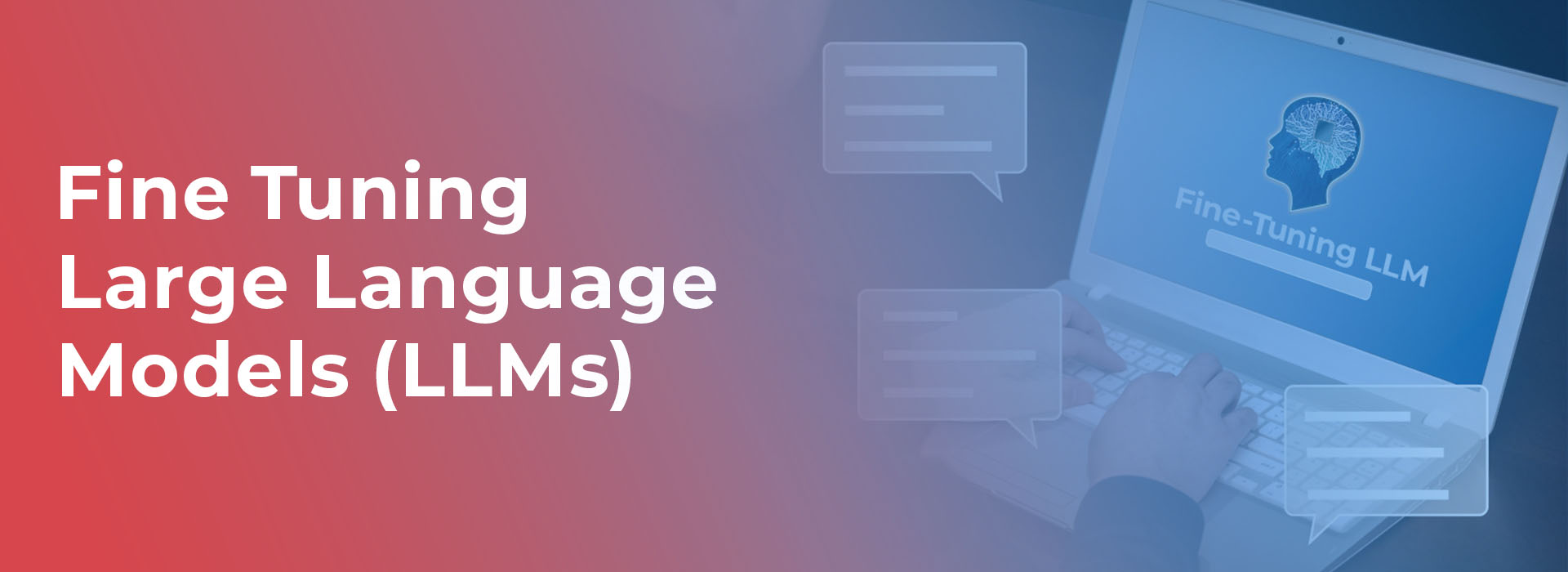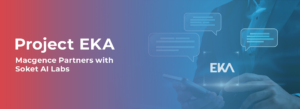Fine-Tuning Large Language Models (LLMs) for Optimal Performance
Large Language Models (LLMs) use deep-learning algorithms to provide relevant and desired solutions to the users. They have the ability to understand natural language. LLMs can perform several tasks including analyzing sentiments, translating languages, writing creative content, and more. The text they generate is grammatically accurate, making it ideal for end users. Fine-tuning LLMs is a well-known process to enhance the working of an existing model. In this blog, we’ll learn about fine-tuning LLMs in detail!
LLMs can perform all these tasks because they are trained on massive amounts of text datasets. This helps them to learn about entity relationships in a language and other patterns. Sourcing quality data for this purpose is a challenge faced by many. Check out Macgence if you are looking for dataset-related services for training your AI models.
To continuously evolve and enhance these models fine-tuning has to be done. The process of fine-tuning involves taking a machine-learning model that is already trained and training it further with additional data. Fine-tuning LLMs is quite significant as training a model from scratch is a tedious process, but fine-tuning helps you to get the desired results in less time. Also, this approach is more accurate.
Understanding Large Language Models
LLMs are built using deep learning techniques mainly transformer architectures and they are trained on large datasets consisting of texts from books, articles, and websites among others. This enables the model to grasp context, translate between languages, answer questions, or come up with some creative content.
However, although pre-trained LLMs might have an overall comprehension of language but are not necessarily suitable for particular tasks out-of-box. That’s where fine-tuning comes in.
What is Fine-Tuning?
Fine-tuning refers to the process of taking an already pre-trained model and training it further using a specialized dataset. Additional training makes such models adapt better to specific tasks mentioned earlier than during the initial training stage since it caters to any industry or language-specific features that were not addressed before then. By doing so you will enhance its performance for a particular customer service chatbot application case study example or any other domain-specific task.
Benefits of Fine-Tuning LLMs

Enhanced Accuracy: For targeted applications such as medical diagnosis fine-tuning by domain-specific data improves understanding and relevance generation by the model therefore leading to improved performances.
Customization: Having the model tailored specifically towards your business needs or even what suits your application best; therefore, it will generate responses that are more applicable to the situation at hand.
Efficiency: In terms of time and computational resources spent, fine-tuned models can process and produce text faster for given tasks.
Reduced Bias: This helps in making fairer AI systems by mitigating biases inherent in pre-trained models as they undergo fine-tuning on diverse carefully selected datasets.
Method for Fine-Tuning LLMs
A typical fine-tuning process involves a number of steps from data preparation to training and deployment. Following are the steps involved in the process of fine-tuning an LLM model.
1. Data Collection and Preparation: Gather a large and diverse dataset relevant to your specific application. Ensure that the data is clean and free from errors or bias by performing cleaning and preprocessing on them. Annotation tools like those offered by Macgence can be quite helpful during this stage.
2. Model Selection: Choose an appropriate pre-trained model as the base for fine-tuning. Commonly used models include GPT-4, BERT, T5, etc due to their strong architectures and extensive training.
3. Training Process: Transfer learning techniques are used to adapt the pre-trained model to your domain-specific dataset. It involves adjusting the weights/parameters of the model so that it fits better with this new information.
4. Testing: Conduct exhaustive testing which should help identify any problems rendering them correctable if possible. This will help in telling how the fine-tuned model is performing as compared to the existing model.
5. Integration: When your model meets your performance requirements, deploy it to your application of choice. Keep checking and updating the model to make sure that it remains effective over time.
Fine-Tuned LLMs Applications
The versatility of fine-tuned LLMs opens up numerous applications across various industries:
Customer Support: By fine-tuning chatbots aptly, they are more able to respond with accuracy and context sensitivity to customer queries hence enhancing customers’ overall experience.
Healthcare: In medical applications, fine-tuned models can assist in diagnosing diseases, analyzing medical records, and even generating treatment plans – providing healthcare professionals with accurate information.
Legal: With the help of fine-tuned models legal practitioners can also analyze legal documents or identify relevant case laws automatically by giving summaries – thus making it an easy task to conduct a study on different legal issues.
Finance: These financial industry tools could be used in making reports about market trends, generating recommendations for investment purposes as well as analyzing these information sources using LLMs enhanced decision-making.
Education: Fine-tuned LLM-powered educational tools can personalize learning experiences for students, generate study materials, and grade assignments thereby supporting students as well as teachers alike.
Challenges of Fine-Tuning LLMs
Although there are significant advantages associated with fine-tuning LLMs some challenges persist:
Data Quality: High-quality annotated data is very important for proper fine-tuning because a bad or biased dataset may lead to suboptimal performance.
Computational Resources: Large models often need major computational power before undergoing finetuning; usually GPUs or TPUs will be necessary in such cases.
Expertise: Fine-tuning involves complex processes that require expertise in machine learning and natural language processing (NLP). It is beneficial to collaborate with experts or to use specialist services.
Ethical Considerations: Fine-tuned models mustn’t reinforce harmful biases or unethical behavior. It is crucial for fairness and bias mitigation strategies to be implemented.
Llm Fine-Tuning Future Trends
Several trends are shaping the future of LLM fine-tuning as AI continues to advance in the field:
Automated fine-tuning: Advancements in Automated Machine Learning (AutoML), have reduced human efforts required during model finetuning, thus making it become a process both simple and less dependent on specialized skills.
Transfer learning improvements: Transfer learning techniques have been improved to help us achieve more efficient and effective fine-tuning which means a model can adapt for new tasks even with smaller data amounts and less computational resources.
Authenticity: Companies now have a great emphasis on developing AI keeping ethical terms and conditions in mind. Fine-tuning practices are being refined so that they follow ethical standards.
Conclusion
By focusing specifically on Fine-Tuning LLM keywords along with expert opinions from leading sources this blog post strives to provide useful tips for those who would like to enhance their AI models into task-specific ones. For further information about how Macgence can help you meet your needs in AI as well as machine learning visit our website or contact our team of experts.
(FAQs)
Ans: – The main objective of fine-tuning LLMs is adapting pre-trained models to certain domains or specific tasks. Thereby enhancing the accuracy, relevance, and contextual appropriateness of responses produced by the model for specialized uses.
Ans: – To fine-tune, how much data is required may vary depending on the complexity of tasks and the model’s size when pre-training was done. However, to achieve success with respect to efficient fine-tuning. It is important to have a wide-ranging and all-inclusive collection of information that represents the target domain.
Ans: – Yes, by training the model on carefully selected and diverse datasets, fine-tuning helps reduce biases. This process allows the model to learn from a balanced representation of the target domain thus mitigating biases present in the initial pre-trained model.
You Might Like
February 28, 2025
Project EKA – Driving the Future of AI in India
Spread the loveArtificial Intelligence (AI) has long been heralded as the driving force behind global technological revolutions. But what happens when AI isn’t tailored to the needs of its diverse users? Project EKA is answering that question in India. This groundbreaking initiative aims to redefine the AI landscape, bridging the gap between India’s cultural, linguistic, […]
March 7, 2025
What is Data Annotation? And How Can It Help Build Better AI?
Spread the loveIntroduction In the world of digitalised artificial intelligence (AI) and machine learning (ML), data is the core base of innovation. However, raw data alone is not sufficient to train accurate AI models. That’s why data annotation comes forward to resolve this. It is a fundamental process that helps machines to understand and interpret […]
March 6, 2025
Vertical AI Agents: Redefining Business Efficiency and Innovation
Spread the loveThe pace of industry activity is being altered by the evolution of AI technology. Its most recent advancement represents yet another level in Vertical AI systems. This is a cross discipline form of AI strategy that aims to improve automation in decision making and task optimization by heuristically solving all encompassing problems within […]
March 5, 2025
Use of Insurance Data Annotation Services for AI/ML Models
Spread the loveThe integration of artificial intelligence (AI) and machine learning (ML) is rapidly transforming the insurance industry. In order to build reliable AI/ML models, however, thorough data annotation is necessary. Insurance data annotation is a key step in enabling automated systems to read complex insurance documents, identify fraud, and optimize claim processing. If you […]


 Previous Blog
Previous Blog







